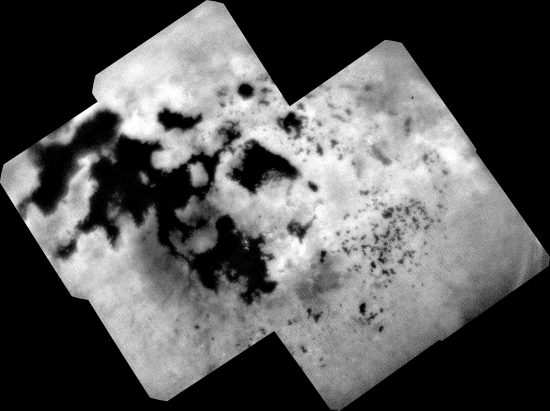
Nov 21, 2019
Cold and dark.
On October 15, 1997 NASA launched the Cassini-Huygens spacecraft. The six ton payload was the largest space mission ever deployed at the time, arriving at Saturn on June 30, 2004. Its name was changed twice during the mission: the Cassini Equinox Mission was a two-year extension that began on July 1, 2008, following the completion of its Prime Mission from July 1, 2004 to June 30, 2008. It was then changed to the Cassini-Solstice Mission, named for the Summer solstice on Saturn that took place in May 2017. The Cassini spacecraft burned up in Saturn’s atmosphere on Friday, September 16, 2017.
Cassini’s discoveries led to many enigmas. For example, methane gas is constantly escaping from Titan’s upper atmosphere, while sunlight dissociates it, changing it back into its carbon and hydrogen constituents. Since Titan is supposed to be billions of years old, how has that methane atmosphere survived for countless eons? With so much loss, Titan’s atmosphere should have evaporated a long time ago. The only way astrophysicists can solve the mystery is to imagine oceans of liquid methane on the surface.
However, when the Huygens lander touched down on a flat, rocky plain, the idea that Titan is “wet” with hydrocarbons suffered a serious blow. No methane was falling from the sky and no methane puddles were visible. Rather, in keeping with images sent from orbit, a vast dry area covered with “sand dunes” was seen.
Before Huygens was placed aboard Cassini, during its mission planning phase, a probe attached to the bottom was dropped into a variety of materials. A pressure sensor was programmed with the results, so that the surface composition of Titan could be determined. Although the mission team preferred to report that the lander encountered something moist, the data was also indicative of dry sand. There was detectable methane around the probe, but it quickly dissipated—presumably because of the heat emanating from the lander.
According to a recent press release, planetary scientists analyzing Cassini’s data archive, found more anomalies. Titan, they speculate, has a weather cycle like Earth, except it involves methane instead of water. Evaporation, clouds, rain, rivers, lakes and seas are said to exist on Titan, despite its temperature of minus 220 Celsius. How those catchments were formed is a puzzle, since they do not fit well with their computer models.
As Electric Universe proponent, Wal Thornhill attested:
“Titan is not a document scribed by gravity attesting to an ancient nebula, but a document etched by electricity proclaiming a recent birth.”
Stephen Smith
The Thunderbolts Picture of the Day is generously supported by the Mainwaring Archive Foundation.












